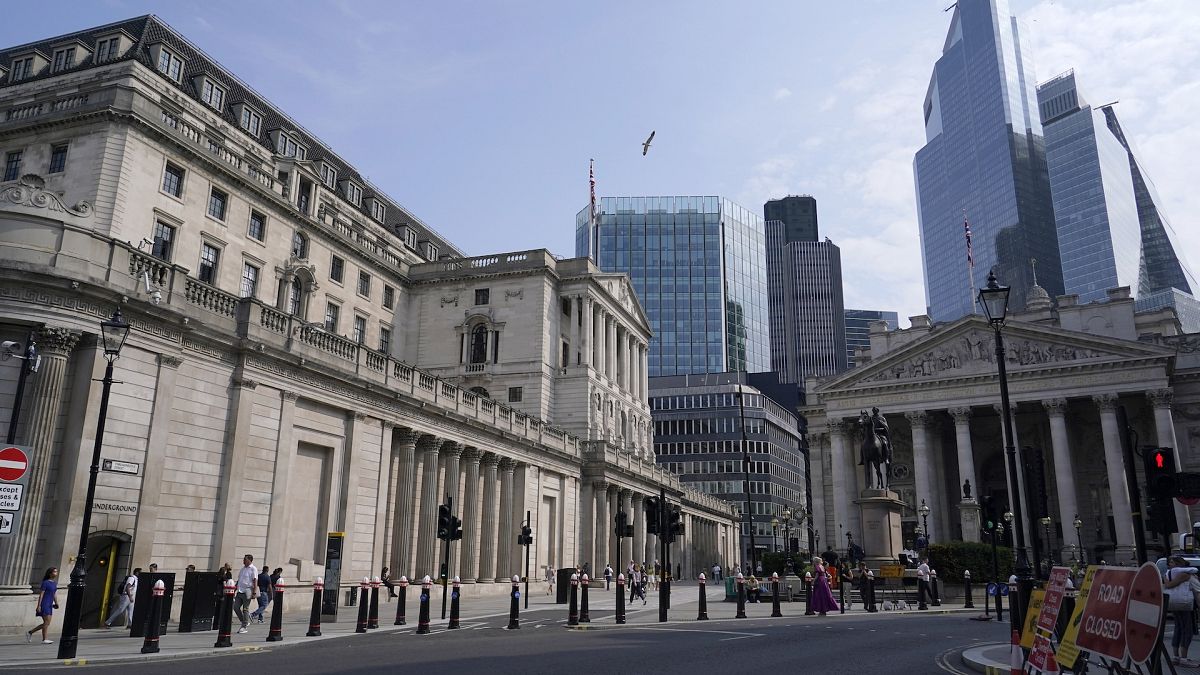The Bank of England is set to announce its interest rate decision on Thursday, with market participants widely anticipating the rate to remain unchanged, given the unsupportive economic landscape.
The Bank of England is set to announce its interest rate decision on Thursday, following the Federal Reserve's move earlier in the week.
While the Fed is widely expected to initiate a rate-cut cycle with a significant 0.5% reduction, the BOE is unlikely to implement a second consecutive cut after its initial move in August, according to most analysts.
However, any unexpected rate cut could lead to significant market reactions, particularly affecting the pound.
Premature for a second rate cut
A majority of analysts believe it would be premature for the Bank of England (BOE) to implement another rate cut in consecutive months.
In August, the BOE lowered the policy rate to 5% from a 16-year high of 5.25%, marking the first rate cut in over four years. The decision was narrowly passed by the Monetary Policy Committee (MPC) with a 5-4 vote, signalling a cautious approach moving forward.
The economic landscape indicates that the BOE is likely to delay a second rate cut until November.
Inflation, wage growth, and labour market conditions are the three key indicators the bank monitors when adjusting monetary policy.
While all three metrics show signs of easing, recent data does not yet provide sufficient justification for an additional rate cut in September.
In July, inflation in the UK rose to 2.2% year-on-year, after cooling to 2% in the two previous months. Despite a significant drop in services inflation to 5.2%, it remains well above the BOE's 2% target, potentially keeping overall inflation levels elevated.
Wage growth has also moderated, falling to 5.1% in the three months to July, compared with 5.4% in May.
However, this decline is unlikely to be sufficient to prompt the BOE to follow through with another rate cut this month. Additionally, the labour market remains tight, with the unemployment rate holding steady at 4.1% in the three months to July. This is a slight improvement from the 4.3% recorded in the second quarter.
The UK economy has shown signs of recovery in the first half of the year, following a technical recession in the final quarter of 2023.
Gross domestic product (GDP) grew by 0.6% in the second quarter, following a 0.7% increase in the first quarter. However, growth has stalled over the past two months, suggesting a potential slowdown in the third quarter, which further complicates the BOE's decision on monetary policy.
Global Rate Cut Cycle
As inflation cools, the labour market eases, and economic growth slows, global central banks have started, or are preparing, to enter a rate-cutting cycle.
Last week, the European Central Bank (ECB) cut interest rates for the second time, signalling that borrowing costs are on a "declining path".
The Federal Reserve's anticipated rate cut on Wednesday could add pressure on other central banks, especially if the Fed opts for a significant 0.5% reduction in interest rates, potentially front-loading its cuts.
This global shift could influence the BOE’s approach, as it balances domestic economic conditions with international monetary trends.
Despite the Bank of England's cautious tone during the August meeting, markets expect it to lower interest rates two more times this year, in November and December.
According to Althea Spinozzi, Head of Fixed Income Strategy at Saxo, the BOE may also announce: "A further £100bn (€84.4bn) reduction in its gilt holdings over the next twelve months as part of its ongoing quantitative tightening (QT) programme."
Currencies brace for a volatile week
The foreign exchange markets are set for a period of volatility in the coming days. A significant rate cut by the Federal Reserve is likely to lead to a further decline in the US dollar, potentially boosting other currencies, including the euro and the British pound.
However, the Bank of England's decision, which will follow the Fed's meeting, could surprise markets. If the BOE also announces a rate cut, it might cause the British pound to weaken significantly.
Additionally, the Bank of Japan is scheduled to hold a policy meeting on Friday. If the BOJ maintains its hawkish stance, it could strengthen the Japanese yen and further weaken the US dollar.















